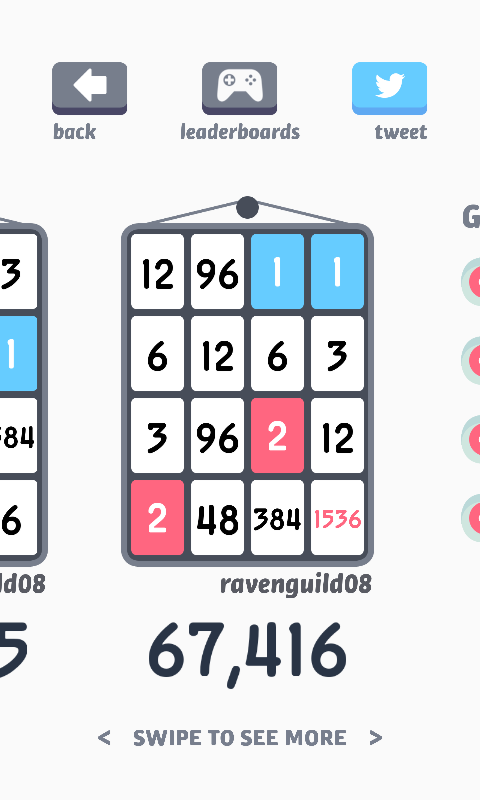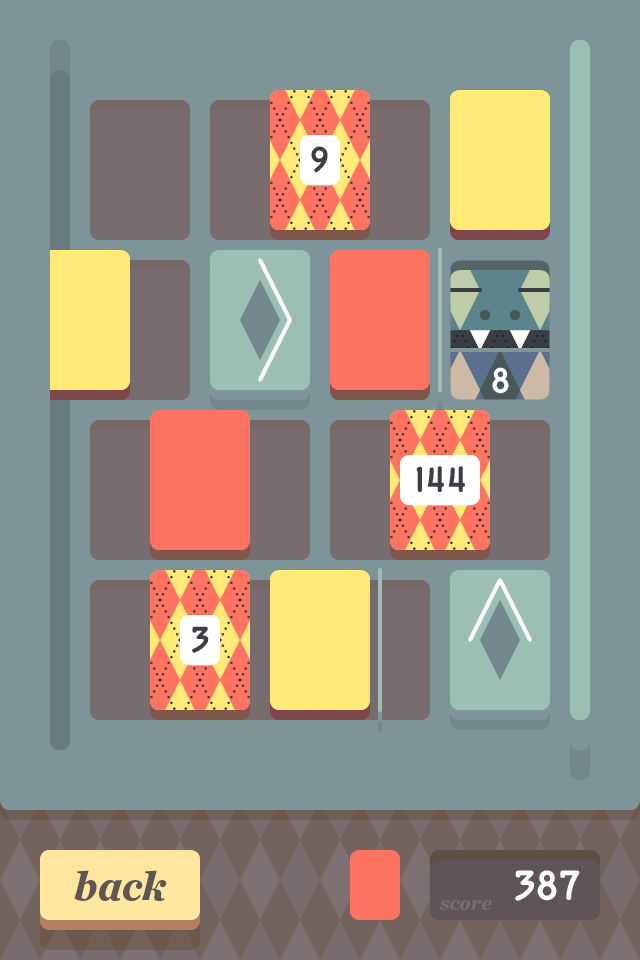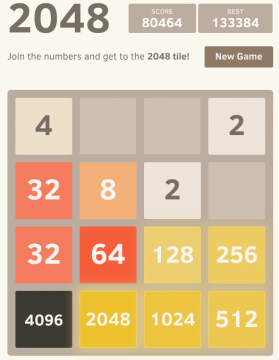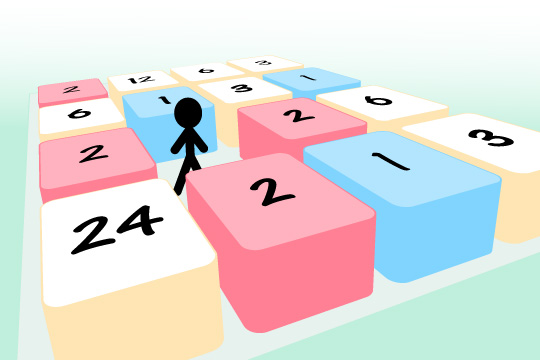This is a post about the game Threes, about design, and about taking life risks.
First, following up from my previous post Stress Threes, I want to boast that I recently built my first 1536. Woot.

Notice that it’s on the official version of the game! I had been playing on a browser clone but as soon as it was released on Android, I bought it for $1.99 from threesgame.com. It’s the least I could do.
What do I mean?
Well, even on its release day, I had to wade through literally dozens of clones and blatant ripoffs to find the true Threes. Less honest developers stole their game idea, repackaged it, and tried to beat them to the market to capitalize on the hype that Threes created. The poor creators were victims of intellectual thievery, something that is becoming increasingly prevalent in this wild digital age. For a concept so simple — simple enough to explain in two sentences, simple enough to code in 50 lines of logic — to make a game that you can play forever... that’s crazy impressive. Sheer brilliance. And easily imitated, unfortunately.
You could tell from the trailer website, from the animations, and from the styling that Threes was meticulously planned and executed. They knew they could make a phenomenal game out of their idea, worked tirelessly on it, and then watched helplessly as others reaped their rewards. The creators, Asher Vollmer and Greg Wohlwend, published this: http://asherv.com/threes/threemails/, their lengthy email correspondence over more than a year of developing the game. I don’t recommend reading it all because it’s terrifyingly long (that was sort of the point of publishing it), but wow, did it affect me.
In my other post, you’ll see I mulled over the game design when playing it myself and wondered — quite loudly — if I could have executed it better. I know how to draw basic stuff on Illustrator (like the featured graphic), I know how to code stuff, and I love thinking about game design. Heck, I’m one of the guilty parties who built my own clone… oops. But in my own defense, I didn’t have an Apple device, and I didn’t intend to share it with anyone!
But yes. Reading Asher’s and Greg’s email thread was humbling. Every passing thought I had, they had discussed at length. Many possible and viable alternate routes I probably would have never imagined, they had systematically eliminated. For example, I wondered why they stuck with the theme of doubling numbers instead of putting the card rank (i.e. 1, 2, 3,…), and they spent months debating between the alternatives before letting their playtesters decide. I remarked that a theme of fusion seemed fitting, and they actively decided to avoid that theme to alienate their players. I wondered why they confined their faces to only the bottom part of the block only to realize that their original versions had some pretty awesome full-card artwork that they eschewed for clarity. In fact, they created like 10 related but entirely different game mechanics on their journey to the current incarnation, the first which was argyle-themed monsters called Argoyles. I’m actually kind of sad they didn’t release that…

For more than a year, they agonized over themes like the game mechanics, look and feel, and marketing. Then they discussed details like whether to animate the walls, the color schemes, overlapping and tiling for the bigger sprites, and how to transition from tutorial to gameplay. All that work behind the scenes and all we have to enjoy are those derpy little emoji faces in their polished “tiny game that grows on you.” Then so many other developers spend mere hours to steal it. That’s why I feel bad.
It doesn’t help that I also enjoy the popular spin-off, 2048, because it’s something mindless for my fingers do while I listen to podcasts and what not. What makes it an inferior game — other than the lack of derpy little emoji faces — is that it’s way too easy. The “corner” strategy is the optimal and lame strategy; in fact, I have a keyboard shortcut script that I prod until it builds a 512 or more for me. Even without keyboard shortcuts, I can win within 3 minutes (yes, I’ve timed myself). My ridiculously high score of 133384 comes from simple perseverance and a decent endgame.

Asher, Greg, and their friend Adam discovered this strategy in an earlier version of Threes during playtesting (the circumstances are a bit different because the tiles don’t slide all the way in Threes, but it’s analogous). Adam noted that he could combat the random high spawns by swiping away from the corner, but he could arrange incoming 1s, 2s, and 3s almost endlessly on the opposite side. He proposed an elegant solution which, in my opinion, makes Threes click: tiles can only spawn when the board has moved. Play both to witness this for yourself.
I admire and sympathize with Asher and Greg. They took two fields that I love, game design and graphic design, and executed this wonderful project. However, just think of what they had to go through to achieve it. They, and other independent game designers like them, pour months of attention, thousands of hours of agony, a piece of their very soul, and more into their creations without knowing what will happen. Their livelihoods, their own identities depend upon their creativity bearing fruit and the capacity to turn it into a marketable product. All they have behind them are empty savings accounts, instant ramen, and their fiery passion for art. Meanwhile, they battle a world full of plagiarism, intellectual thievery, blatant piracy, obnoxiously rich game studios, and the mercurial tastes of gamers. No wonder it boils down to luck so often. Bad luck, usually.
I’m actually kind of glad that I’m not a die-hard artist or designer… Instead, my passion for interacting and helping people is leading me into the (relatively) stable healthcare sector; doctors won’t be replaced by machines for a couple of decades, at least.
The moral of the story is: you can’t trust the system!
Images courtesy of threesgame.com. Buy Threes, please.
